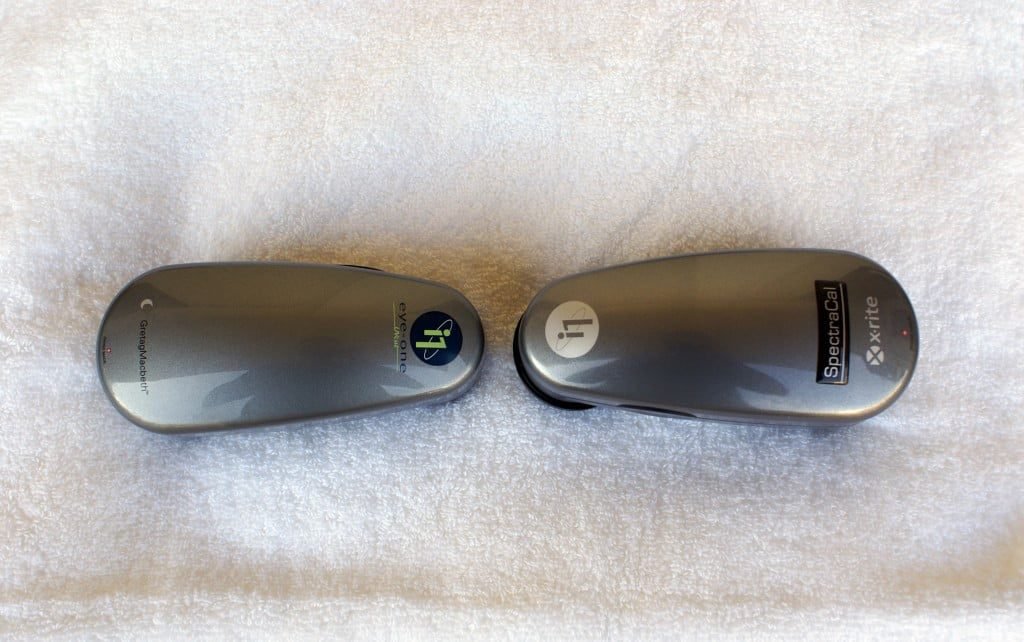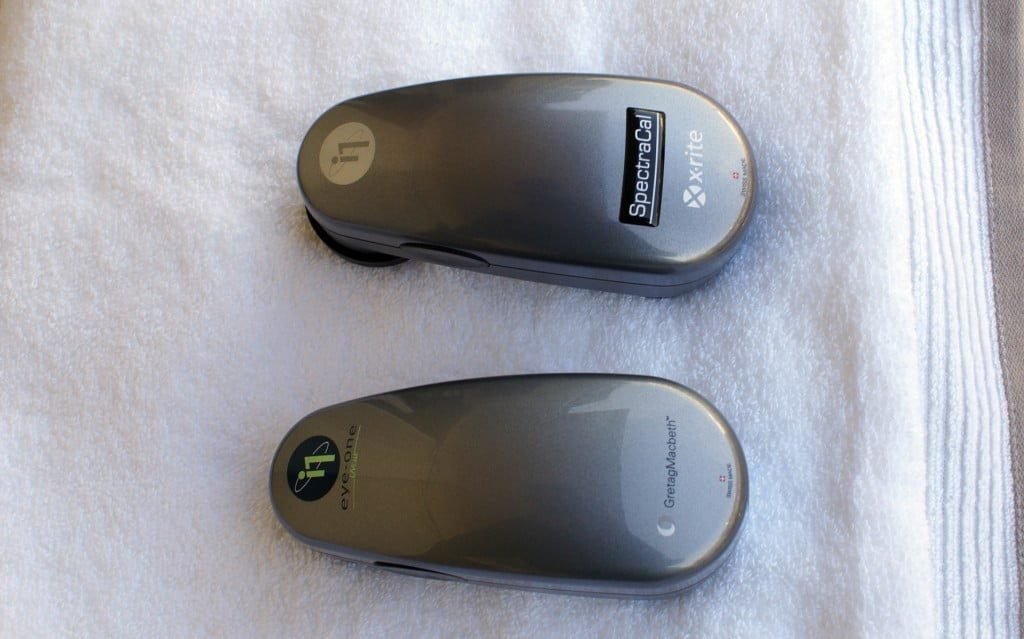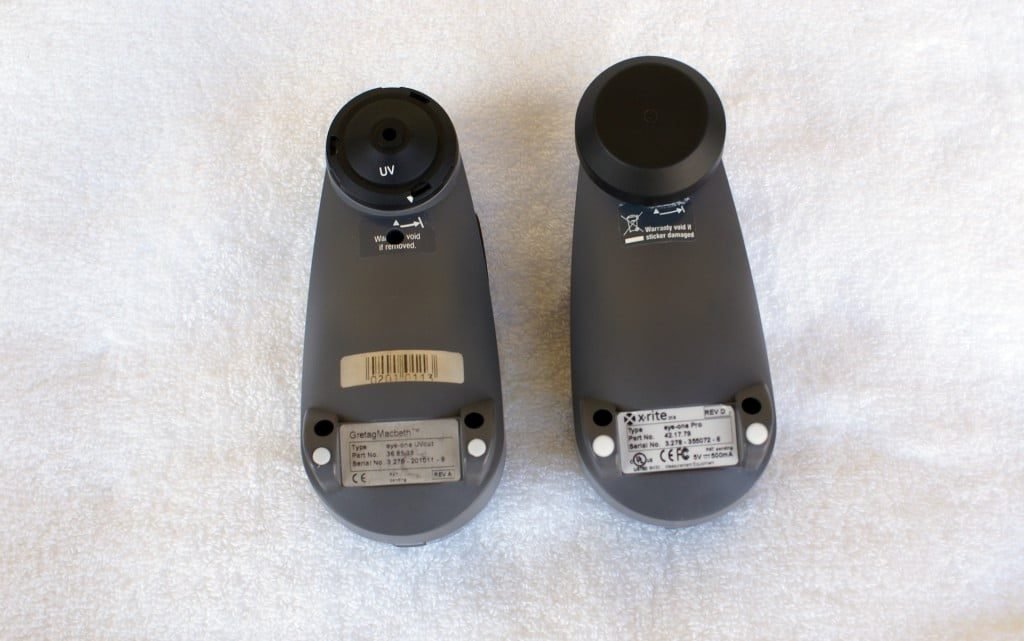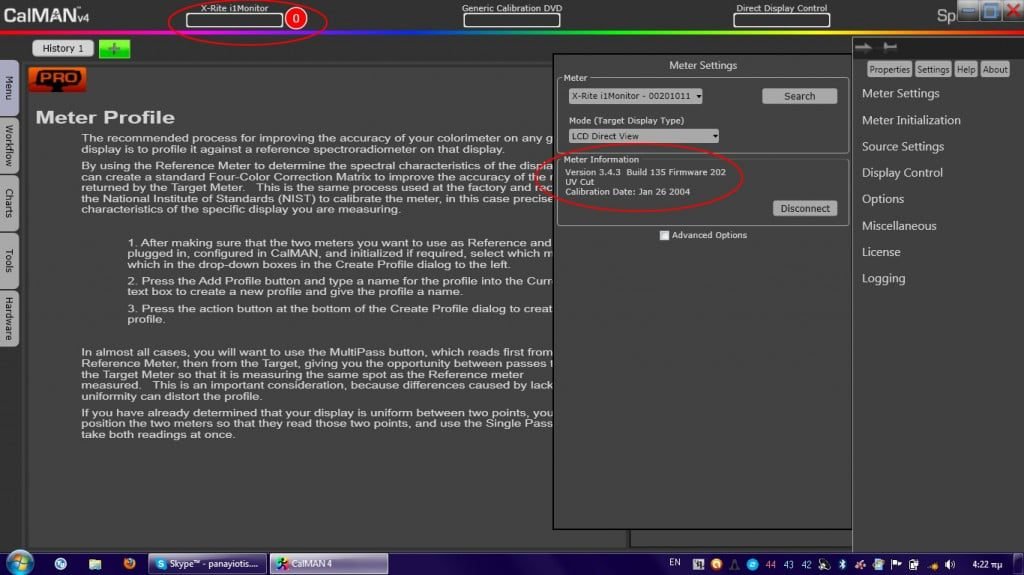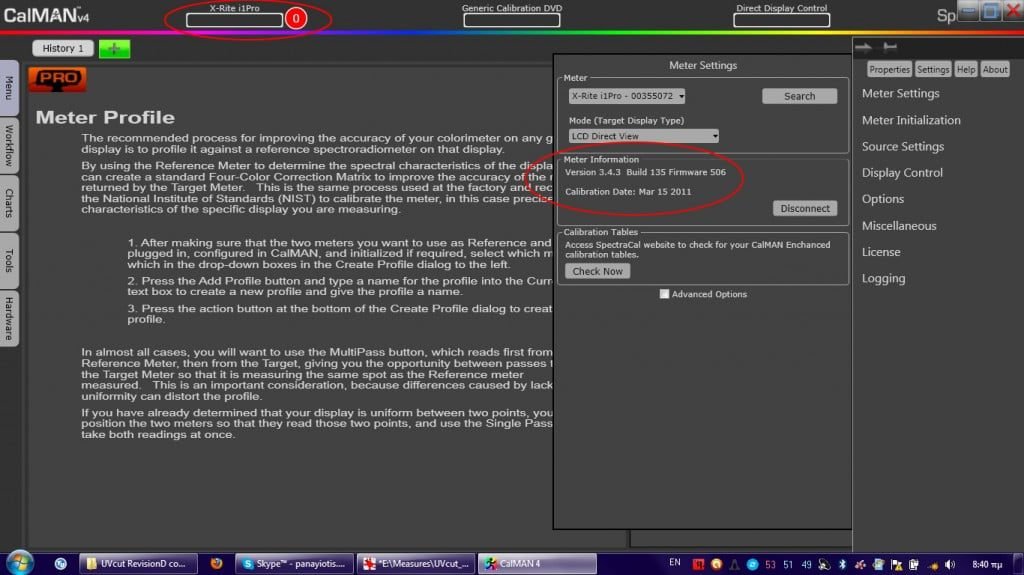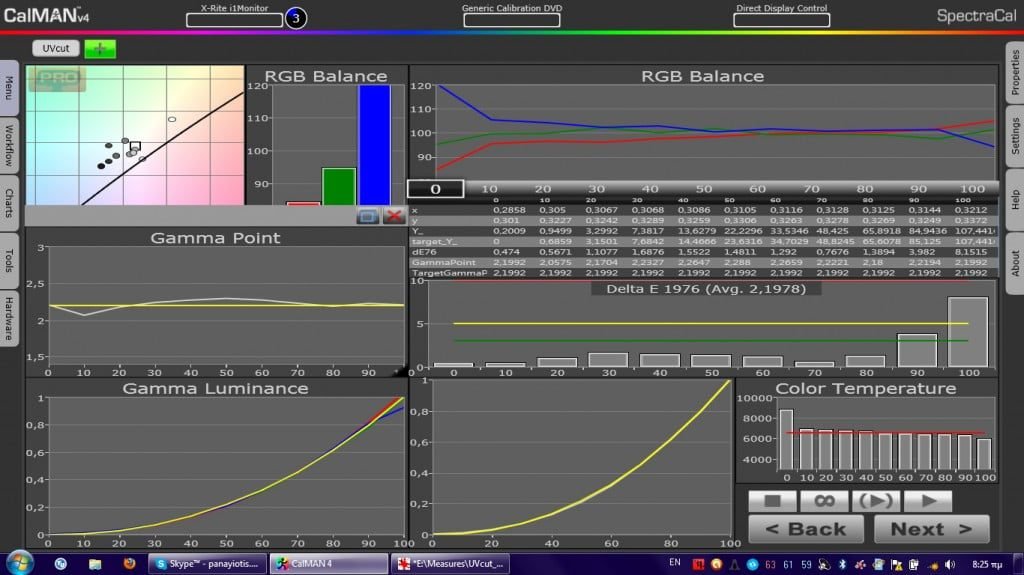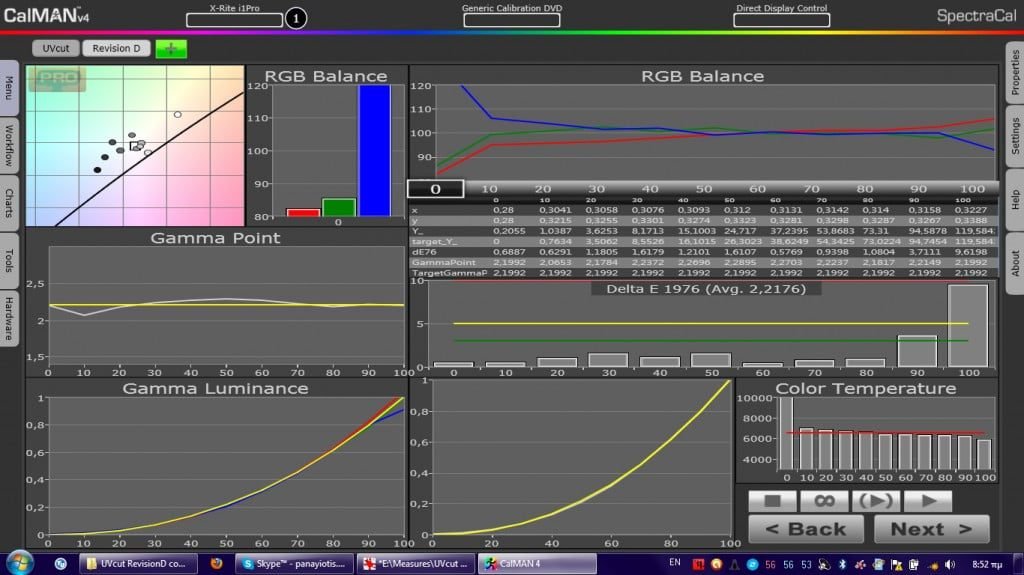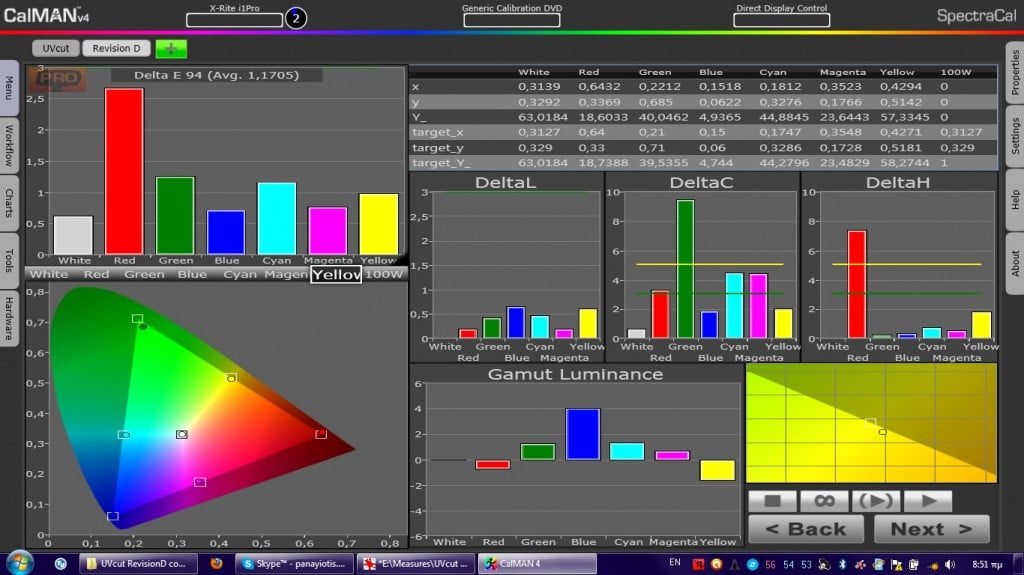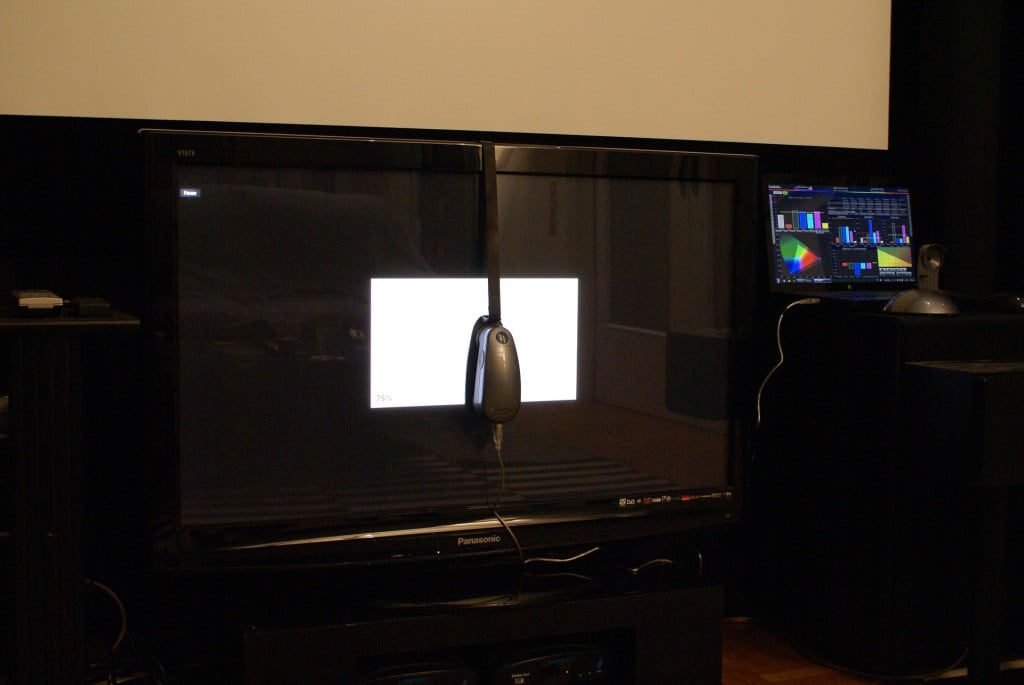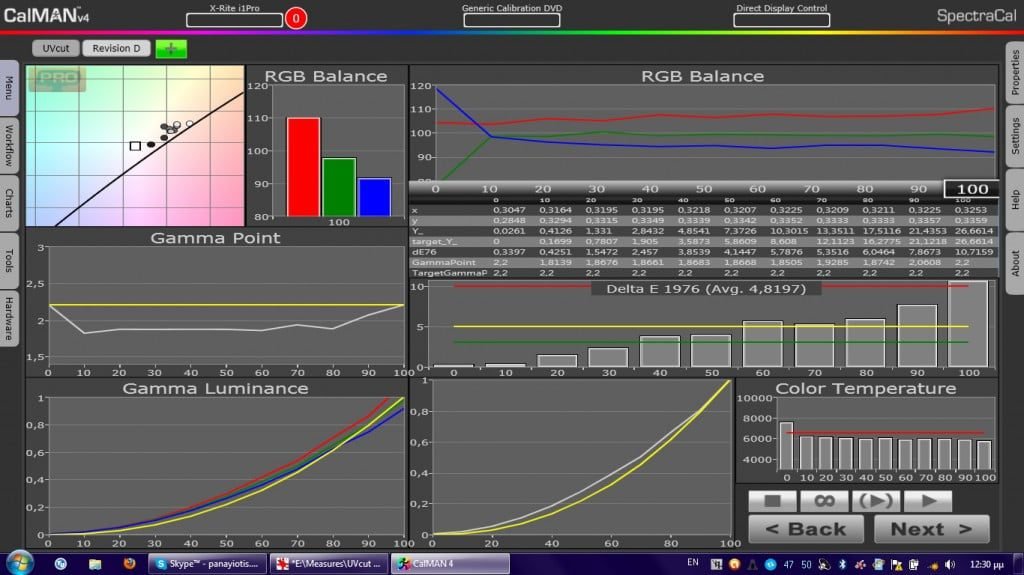The myths circulating on the Internet about calibration, methods and programs that should be used, but mostly for the hardware, i.e. various types of sensors and its supposed accuracy it is countless. As one reads and is informed, that is trying to deepen more in the subject, so literally lose ball, mainly because of various “conflicting myths” circulating on the Internet.
The myths of the Internet around the GretagMacbeth i1 Pro and X-Rite is endless. That gobbledy imaginable circulating on the Internet, sometimes even from the most official lips or some graphic types who play bright omniscient. Let’s look at a few of them:
• As new revision is an i1 Pro, so better you counts, e.g., i1 Pro D a revision will count better than another which is revision C or A revision.
• The very old i1 Pro, which is IE versions Beamer (the first IE i1 Pro released in the early 2000s) or those who are A revision is about to … littering, a count and now “koykoyroykoy”.
• The i1 Pro incorporating the UV filter is inappropriate for calibration in monitors, projectors, televisions, etc., because count koykoyroykoy.
• I1 i1 Pro/Pro 2, although they belong to the category of spektrofwtometrwn or spektroradiometrwn can be “ntriftaroyn” with the passage of time, i.e. to alter their measurements, in other words to make mistakes in a wider range than that provided for in the original factory kalimparisma from X-Rite. The particular legend indeed, reinforced too by the fact that the X-Rite recommends sent to her each year all the i1 Pro for recertification, renewal certificate i.e. that count with specific standards of accuracy. What does more proof you would like, moreover, when the ISF itself requires to be in possession of all candidates to be certified calibrators, a i1 Pro with recent certification from X-Rite, i.e. less than one year?
The theory, however, says that a spektroradiometro can be affected by: a) a wallop or by falling from a great height on the ground. b) from bad storage conditions, namely exposure to very bright light, such as sunlight or from prolonged storage under conditions of very elevated humidity etc. Although such a long aprosechtes storage conditions a i1 Pro cannot be excluded completely, the elementary logic tells us that a wise man wouldn’t play ball with the i1 Pro, nor will the takes with him on the beach Aygoystiatika and stretching out in the Sun to liastei!
If we assume that a Pro i1 store supplied correctly, i.e. Special gown or in a dark cupboard away from sunlight or increased humidity, will alter significantly the measurements with the passage of time or not? I.e. substantial allegations of X-Rite on a potential “ntriftarismatos” a i1 Pro purely in the realm of marketing and of easy and inexpensive profit or not? Let’s not forget that the recertification of the X-Rite i1 Pro a costs 150-175 dollars, excluding shipping costs. We not only see, but with solid arguments that do not bear questioning rather than assumptions.
At projectorjunkies we hold here a year and a half about a GretagMacbeth i1 Pro of that is A revision and wearing UV filter. Here one and a half month but reached our hands as you already know, and a second Pro i1 but revision D and not wearing the UV filter.
Did you notice something? According to the myths of the Internet, both i1 Pro observe all the requirements mentioned above, and that seems to put the i1 Pro, A revision with the UV filter in a particularly “difficult” position, i.e. counts on koykoyroykoy in connection with the i1 Pro, revision D.
What say you, to make it even a bit more difficult to position i1 Pro, A revision, with UV filter? To see exactly how in principle recognizes the Calman two i1 Pro, for there is no dispute about the facts that you present. Although this is the exact same hardware, as you can see from the General list of Calman compatibility with various sensors,
http://commercial.spectracal.com/calman5/hardware-support
the Calman in both versions of the series 4 and series 5 versions, recognizes both i1 Pro with two different names. The i1 Pro, A revision, with UV filter recognized as “X-Rite i1 Monitor”. In this photo you’ve rounded up not only the name of the i1 Pro, A revision, UVcut, but most importantly, when exactly kalimpraristike factory from X-Rite. For watch well the date circled: 26 January 2004! Chachacha, talking IE for a virtually “age-old” i1 Pro, aged 10 years!
To go now to see the corresponding window of the i1 Pro, revision D of the Calman. As you can see, the i1 Pro, revision D recognized by Calman as X-Rite i1 Pro. For watch now on the factory calibration date of the X-Rite: 15 March 2011! If you compare two dates easily, you conclude that our two i1 Pro eftamisi spaced years as to when kalimpraristikan!
If you even consider the fact that in April 2012 was introduced by X-Rite i1 Pro the 2, I think that will be readily understood that there could and very easy to find on the market today a i1 Pro with fresher factory calibration by our own Pro i1, revision D. As you understand, all items that you’ve listed so far (and according to the “myths of the Internet” on the i1 Pro) in favour of i1 Pro , revision D and i1 Pro, revision A, UVcut.
Measurements
A. Monitor Dell U2410
Here we go to see the differences in measurements between two i1 Pro. And to make even more difficult the life of A revision, UVcut, would not only in the color triangle REC709 which concern us all who we are trelamenoi with the big picture of projector. For starters we compared well both i1 Pro in my own monitors at home, a Dell U2410. Selected mode on monitors was the Adobe RGB (1998), a color triangle that is quite larger than the classic REC709.
Test conditions: both i1 Pro-4s in monitors for 10 minutes at least to balance the temperature with this monitor, before starting the measurements. The monitors have been in continuous operation for more than 10 consecutive hours, thus completely stabilized. Precision measurements with a tape measure, to ensure that both i1 Pro measured almost exactly the same spot, in the center of Dell monitors effectively. The USB connection cable that chrisimopoiithike with both i1 Pro, was the original cable of X-Rite. It is understood that the selected mode on Calman was the Adobe RGB. Player was in Photoshop and I used exactly the same mine in paternakia which was the comparison between the LightSpace and Calman. Measured well first the RGB and here you can see the detailed measurements of the i1 Pro, revision A, UVcut measured first.
While here you can see the corresponding measurements of the i1 Pro, revision D.
Notice how did amazingly the same measured both i1 Pro? The difference in Delta E is only 0.02 (!), by within A revision 2.19 in 2.21 in revision D!!! What to prwtoanaferthoyme, e.g., in on/off contrast that measured both i1 Pro, with A revision to 537 counts: 1, while the revision count D 597:1? The gamma curve that is exactly the same? In RGB percentages that are nearly “carbon paper” on each other? Do you remember how major differences we measured, and even counting the same i1 Pro, from 30IRE and down between LightSpace and Calman?
The only noticeable difference between the two measurements i1 Pro, is the measurement of brightness of 100% white of Dell monitors. The i1 Pro, A revision count 107.4 nits while the i1 Pro, revision D measured 119.5 nits. This difference is of the order of 11%, from bottom to top. At this point there is no doubt in my humble opinion, that the i1 Pro, revision D counted rather on brightness, have ticked this with multiple other sensors, and as you will see later, always the i1 Pro, revision D counts above brightness from A revision.
Here we have the first myth that seems to be confirmed by our own measurements, “age to age” the i1 Pro, and lose a percentage brightness in their measurements. But to clarify something, this does not affect absolutely nothing in the functionality of the sensor, the brightness loss is “proportional” to the entire range of brightness scale, which is why you see to have captured two virtually identical gamma curves between the two measurements. And do not tell me now, they would sit one to take into account the “serious”, e.g. measurements on/off contrast with an i1 Pro on a projector with a good black, given the weakness of the sensor at low luminosity. It goes without saying that we use a good light meter and a tripod for precision measurements of the projector’s lens.
Continuing measurements at Dell U2410, pass in the paint. Here you can see the measurement of i1 Pro, A revision.
And here you see the color measurements of i1 Pro, revision D.
As you can see in the color measurements in Adobe RGB color triangle, two sensors count virtually exactly the same. The difference in the Delta is just E 0.14 when proven human sight cannot perceive differences smaller than Delta’s unit E, i.e. 1.
The first indisputable conclusion: both of us i1 Pro count exactly the same on a LCD monitor capable of wide color triangle, i.e. Adobe RGB, such as the Dell U2410.
Not convinced yet? Well do. And we here at projectorjunkies. We are trying to do, as far as possible always, repetitive and exhausting measurements before you present some evidence and our conclusions. Here we go to the next “victim”, the plasma tv that I have in my living room, the Panasonic TX-P42U10E.
B plasma Tv Panasonic TX.-P42U10E
Test conditions: just as in the case of Dell monitors, and Panasonic both i1 Pro-4S on tv for more than 10 minutes, to balance the temperature with this television, before starting the measurements. The tv was playing for more than 12 consecutive hours, so it was totally frozen. Selected mode on Panasonic were the Cinema. The tv does not have individually never, I didn’t care to get involved with the service menu. Source was the HTPC in the living room, and the player TotalMedia Theatre. Again the USB connection cable of two i1 Pro with the laptop was the original of X-Rite, as shown in the photo below. Reference Paternakia was the AVSforum, naturally in the form window. Will not tell lies, bored this time to count again with the scoop, I was almost sure I’ll take measurements, just I both i1 Pro be placed in the eye, roughly in the same spot almost at the center of the window in the reference paternakia. The Panasonic does not suffer from chromatic dispersion in a Panel.
Here you see a photo of the test conditions.
Go to see and where I got the measurements from the Panasonic plasma. Precede again RGB measurements from the Pro i1, A revision.
While here you can see the RGB readings from the i1 Pro, revision D.
At Panasonic, we have observed that the differences in measurements of both sensors is larger than those of Dell monitors, but is again insignificant again completely non-detectable by human vision. The difference in Delta E is at 0.31. From my own daydreaming, I forgot on measurements of revision D mean on Calman to count in nits, and thus counted in fL, but conversions are a snap.
A noticeable difference in gamma, observed exclusively in the 90IRE revision A measured gamma 2.21 while revision D measured gamma 2.06. Throughout the rest of the scale however, gamma measurements are essentially identical.
Brightness measurements now, and again the revision D measured above brightness with fL 26.66, i.e. 91.34 nits while A revision counted 85.31 nits. This time, i.e., the difference in brightness is at 7% from bottom to top, in measurements of two sensors. In measurements of on/off contrast now, for the first time a vantage point of revision D versus A revision a and Panasonic’s plasma has much better black than that of the Dell U2410, it makes sense to “she’s” a lot more two sensors to measure the luminance of a black, and brings them in absolutely limit capacity measurement of brightness. So it seems A revision terminates the theoretical boundaries down, counting 0.28 nits in black, measuring so substantially on/off contrast in 304:1, which is of course wrong.
In contrast, the revision D seem to exhaust the limits of the theory down, counting 0.026 fL, i.e. 0.09 nits, so counting on/off contrast in 1014:1, measurement of which is close to real on/off contrast that attaches the Panasonic. Although I speak here for an arguably better measurement of revision D, I repeat once again that the functionality of A revision is not influenced one iota, why won’t anyone take seriously readings on/off contrast you have done with an i1 Pro, because of their inability in low percentages of brightness.
So we have measurements and on a plasma tv, essentially identical between the two sensors.
Not convinced yet that the i1 Pro both count the same? Well do. Later in this article I will introduce you and measurements of two sensors in DLP projectors, as well as on SXRD LCOS or. We hope that you’ll eventually convinced that both of us i1 Pro, although the separate eftamisi years in age and factory calibration, count virtually the same. Why of course, even if we will not count with two Pro i1 and CRT televisions to convince you!
In my humble opinion my friends, however, the conclusion that a i1 Pro with careful use and storage, not ntriftarei with the passage of time, commonly does not alter the measurements. At least not for eftamisi years, longer course, i.e. for fifteen or twenty years, I can assure you. Although in general I don’t like on my own technical articles referring to measurements that have made others, this time I cannot resist, well on measurements of Michael Chen, one of the professors in the seminars of ISF and THX to this link from your own site:
http://www.tlvexp.ca/2012/04/do-calibration-tables-really-work-for-tri-stim-devices/3/
The Michael Chen compares measurements of his i1 Beamer (the name of the sensor before renamed i1 Pro), who gained attention in 2002-with its own Jeti 1211, a spektroradiometroy with optical resolution in 4.5 nm, i.e. an institution of exceptional precision laboratory reference level. Quote the excerpt of Michael:
Further to this one person asked about not knowing if the i1 pro was accurate to begin with. Well here is a picture of the results on the same Panasonic LCD set from above take with my i1 Beamer (before it was called the i1 pro)… circa 2002 when I first got that unit. It has never been sent back for recalibration. (A testament to the industry people that said that the i1 pro units don’t drift much at all if you take care of them). This is what I expected from a more budget spectro and as expected, the probe has more difficulty reading the 10% and 20% patterns. It is not $11000 like the Jeti, but it is pretty close … as we expect. This is what a reading of a tri-stim probe with tables should look more like.
I imagine that everyone who read us here know English, so you can draw your own conclusions. On the subject of lower luminance that we observed in the older of the two ours i1 pro, i.e. A revision, UVcut, you can find in the two last drawings of Michael on page 3 of the article two elements: a) how close reads the “ancient” i1 Beamer who hasn’t ever resent new calibration, in connection with the Jeti 1211 in RGB , gamma and color and b) i1 Beamer that Michael’s coming now almost be “extinguished” by brightness, Jeti 1211 record brightness in nits 100 76.8% white, while i1 Beamer counts respectively just nits 46.4 in LCD LED LG tv! That is, we are talking about a difference of brightness from the bottom to the top of the order of 65%!
I think that it is easily understood that to determine with precision how much exactly lose brightness measurement in the i1 Pro as age, would require comparing several dozen samples of different age and hours of use, but also how to use and store.
As a final conclusion, you can safely buy a second-hand i1 Pro, even A revision from ebay in real value in kelepoyrioy 100-250 euros, and spot the kalimprarismata in collaboration with the who and HCFR is free …
Panagiotis Vogiatzakis



